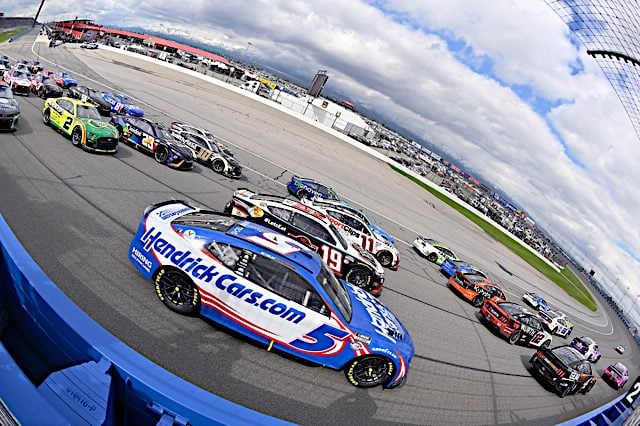After this weekend’s races at Auto Club Speedway, the curtain dropped on the two-mile, D-shaped oval after 33 races. The track will be off the schedule for at least the 2024 season and possibly 2025 for a reconfiguration project that will change the speedway into a short track.
After the sale of much of the land surrounding the former California Speedway that was reported Friday (Feb. 24), there are suddenly more questions and answers about the track’s future, though it appears that part of the redevelopment will include parting for race events. A final rendering of the new track layout has yet to be released, adding to speculation.
Whatever the future holds, though, the last NASCAR Cup Series winner on the old ACS, Kyle Busch, has been crowned, 26 years after Jeff Gordon took the first trip to victory lane. Jimmie Johnson’s six wins will stand for all time as the record for the two-mile speedway.
There was a little something in the air this past weekend as rain and snow pushed the NASCAR Xfinity Series race to a Sunday night event. Surprisingly, people talked about the end of the old era in reverent tones, at least a little.
It was…sentimental.
I have to admit, for a minute there, I almost bought in.
And for the life of me, I don’t know why.
First of all, even with the questions surrounding the land sale, all indications are that the track intends to reinvent itself as exactly the kind of track fans want: a one-half to two-thirds of a mile short track. Racing may very well resume.
Quite frankly, it’s almost guaranteed to be better than what we got saddled with for most of ACS’ existence.
The track was added to the Cup Schedule in 1997 as NASCAR was on a meteoric rise and looking to add the southern California market it had lost with the closure of Riverside Raceway. Racing was often less than compelling, with margins of victory frequently over a second. Aerodynamic dependence was already rearing its head in the sport and NASCAR made a string of mandates to gears and suspensions that throttled teams even further.
ACS joined the schedule at a time when almost every new track was 1.5 miles or more in length, arenas built to host the maximum number of race fans and both open-wheel and stock-car contests. For a little while, it worked out because people were clamoring to go to any race they could as the sport’s popularity grew.
ACS wasn’t the only new track on the 1997 Cup schedule; Texas Motor…
Click Here to Read the Full Original Article at …

